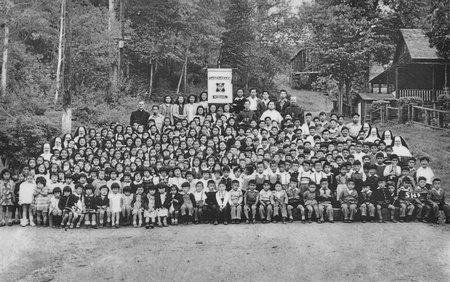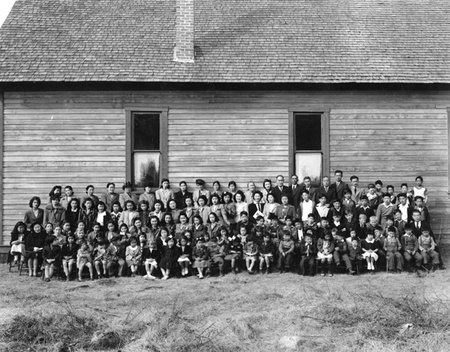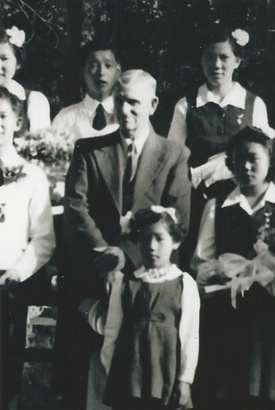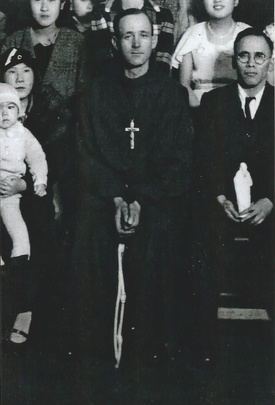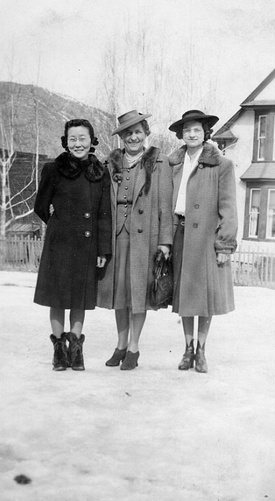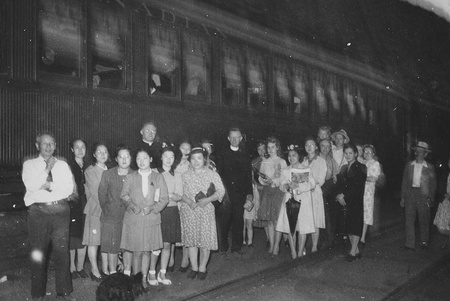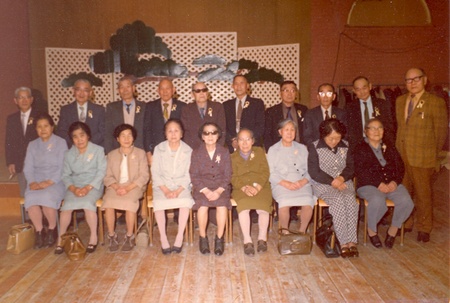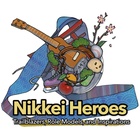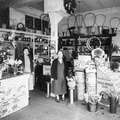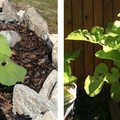In present day Canada, the high profile Nikkei we hear of so often are people like David Suzuki, Joy Kogawa, Muriel Kitagawa, Thomas Shoyama, Santa Ono, Raymond Moriyama, Art Miki, Mary and Tosh Kitagawa, and athletes like Paul Kariya (hockey), Nathan Hirayama (Rugby 7), Vicky Sunohara (Olympic hockey), Special Olympic skier Brian McKeever and the Hall of Fame Vancouver Asahi baseball team (1914-1941).
From 1942-1949, during the forced relocation from the B.C. coast beyond the 100-mile radius east to various internment camps, who were the unsung heroes? This is my list.
Nikkei Women:
When the federal government of Canada declared Japanese Canadians as ‘enemy aliens’ and the forced relocation began, men 18-45 years of age were sent to road camps around B.C. and some to Ontario. The young men from Ganbari-ya and some Mass Evacuation Nisei Group (protesters) were sent to POW camps in Petawawa and Angler, Ontario. As a result, mothers and older daughters were left to handle all the responsibilities of preparing for the move to the internment camps.
One can just imagine the chaos and stress of hastily packing what was necessary to their destination. What to leave behind? Children had to be taken care of, which probably fell in the hands of their older daughters. How could women and children carry 150 lbs. and 75 lbs. respectively? Many young mothers were petite and most children were too young to carry heavy suitcases and clothes bags.
Horse stalls at Hastings Park were dirty and smelly. Again, the clean-up began in their new setting. Then, to the internment camps where one family had to share a cabin with another family they didn’t know. Temporary tents at Popoff internment camp was another challenge.
Once settled in their new environment, the exiled Japanese Canadians must have felt like refugees, but what were they escaping from to be ‘evacuated’? From 1942-1949, mothers had to worry about education, social activities, and to provide food for the family when most of the ‘breadwinners’ were sent away to road camps. Young girls just fresh out of high school or college were encouraged to teach due to the shortage of teachers in places like Lemon Creek and Popoff.
Most of the camps closed down after the war, especially in the Kootenay. The government enforced “Go East of the Rockies or Repatriate to Japan” ultimatum. Again, the families were pressured to move. Making choices became tense in most families. It was the argument of going to a war torn country or going east of the Rockies where more uncertainties lay ahead.
In spite of all the confusion and desperate decision-making, the Nikkei mothers and daughters were able to keep the families together to overcome such adversities. They were the heroines. I salute you!
Religious Groups:
Personally, the Franciscan Sisters and Friars of the Atonement of Graymoor, N.Y. made the most impact during the critical period of 1942 when the federal government decided to remove Japanese Canadians from coastal B.C. under the War Measures Act which was similar to Executive Order 9066 in the U.S.
The Franciscan Order started the Japanese Catholic Mission near Powell Street’s Japantown in 1926 and in Steveston in 1931 where majority of the Japanese immigrants lived. The Franciscans had a mission in Yokohama, Japan, so they had experience working with Japanese converts.
Several parishioners asked Fr. Benedict Quigley to find them a safe place to go. Father Benedict travelled to Nelson and Greenwood to find a place where the Japanese Canadians would be accepted. Then Mayor W.E. McArthur Sr. collaborated with Father to bring the exiled Nikkei to this community which was once a booming copper mining city that met hard times with the closure of the smelter in 1919. There were fewer than 200 people at the time when the new arrivals came to Greenwood. When no other communities wanted the ‘unwanted’ enemy aliens, Greenwood ‘stuck its neck out’ to do otherwise. As a result, Greenwood became the first internment site. Other towns suffering economic decline, like New Denver, Slocan, Sandon, Rosebery and Kaslo followed suit. Therefore, most of the internment camps were clustered in the Boundary/Kootenay district.
Father Benedict Quigley was my hero because he didn’t get the credit he deserved. Father loved his parishioners, so much so that he even learned the Wakayama dialect. Father Benedict who was instrumental in bringing the Japanese Canadians to Greenwood was asked to return to New York headquarter, but he refused. Once he got his flock settled nicely in Greenwood, he left reluctantly. There were rumours as to why he had to return. When Father Benedict returned to New York, he left the Order. He became a diocesan priest north of Kamloops, a place called Little Fort. When he died, the church was packed with Nikkei mourners.
In New Denver, the Notre Dame des Anges started Notre Dame High School since secondary education wasn’t funded by the government. Therefore, the Catholic nuns from Quebec stepped in.
The Methodist Church worked with the Japanese Canadians in Japantown, Vancouver Island and New Westminster long before the Catholics. Reverend Goro Kaburagi was the first Japanese minister on Powell Street in 1896. A Japanese Methodist Church was built on Powell and Jackson Street in 1906. In 1952, United Church of Canada sold it. To right the wrong, UCC paid $500,000 in compensation to Vancouver Japanese United Church for the loss of property.
Many Caucasian missionary workers were in Japan before the war. Just before the Pacific war, missionaries returned safely back to Canada. They were Japanese speakers so the transition to aid the Nikkei in the internment camps went rather smoothly. The Women’s Missionary Society had to establish education in the camps since B.C. government denied funding education to Nikkei students. Gwen Suttie and Hide Hyodo established the curriculum and found buildings to be used as school classrooms in Slocan and New Denver. Grace Tucker, an Anglican, offered social services and family welfare. Anglican Church provided kindergarten class while the United Church offered elementary and high school in Tashme. Reverend Kosaburo Shimizu went to Kaslo. In Greenwood, Madeline Bock and Grace Namba started United Church kindergarten and C.G.I.T. for young girls.
For those Nikkei families who chose to go to Ontario, Gwen Suttie and Grace Tucker helped the families to relocate east and oversaw the welfare of their parishioners in the Toronto area. As well, these church groups wrote letters of protest to the federal government that enforcing discriminatory laws were unjust. The publicity helped gain more sympathetic followers. Finally, the government rescinded in 1949, and Nikkei were given equal rights to be Canadians. Too bad, that these religious groups were not governing the country. If B.C. and federal government passed these Draconian laws just to get more votes, it is indeed tragic.
Communities:

When federal government issued the ultimatum, “Go east or go to Japan”, the City of Greenwood, Board of Trade and Mayor McArthur protested this discriminatory bill to keep the Japanese Canadians from relocating again. New Denver followed when J.C. Harris of Harris Ranch wrote a letter of protest to the government stating that their new residents were law-abiding and productive. Thus, many Nikkei families made Greenwood and New Denver their hometown. Camps in Tashme, Lemon Creek, Popoff, East Lillooet, and Bay Farm were dismantled and the shacks sold. They became empty fields once again.
For those families who chose to go to Manitoba and Ontario when the ultimatum was enforced, mostly the Jewish shop and company owners would hire the desperate, job-seeking Nikkei. When they found out how good the labour force was, the owners scoured the city to recruit and hire more reliable, skilled Japanese Canadians. Life for the Nikkei started all over again after a setback of seven years, compared to the Japanese Americans who were able to return to the coast in 1945.
National Association of Japanese Canadian:
National Association of Japanese Canadian (NAJC) members headed by President Art Miki helped win the redress for the Nikkei community in 1988. It wasn’t so much about the compensation, but the fact that Canadian government’s discriminatory laws against an ethnic group came to the forefront. Cultural centres were built in Burnaby and Toronto. The Nikkei Internment Memorial Centre in New Denver was created with the redress grant. Nikkei communities resurfaced all across Canada as a result.
Others:
The Russian-Ukrainian Doukhobors were pacifists who did not bear arms for Russia. Thus, they were persecuted so they fled to Canada. The religious group settled in the Slocan-Castlegar area of Krestova and Brilliant. Most were self-sufficient farmers. When the Japanese Canadians were sent to internment camps in the Slocan Valley, these sympathetic Doukhobors came to sell their fruits and vegetables. Seeing this transaction, the BC Security Commission who oversaw the camps put a blockade to keep the farmers out. BCSC did not wish to make it too comfortable for the internees or else they would have no desire to leave B.C. In the night, the Nikkei teenagers took down the blockade of beams and logs!
The Red Cross supplied basic necessities like rice and soy sauce to the camps.
Finally, the Issei and Nisei’s resiliency, resourcefulness, and determination proved to be great role models for the younger Sansei and Yonsei to be hard working, law-abiding Canadian citizens.
The early immigrants from Japan in the late 1800’s came to Canada without knowing the customs and culture, survived making less than minimum wage, raised a family, fought and turned back the anti-Asian mob in the infamous Powell Street Riot in 1907, fought for Canada in WWI even though they were denied enlisting in B.C., and they had to travel to Alberta to sign up, endured the Great Depression, and the War Measures Act that forcibly removed them to internment camps. Through it all, they have been model Canadian citizens. The torch has been passed.
© 2019 Chuck Tasaka



